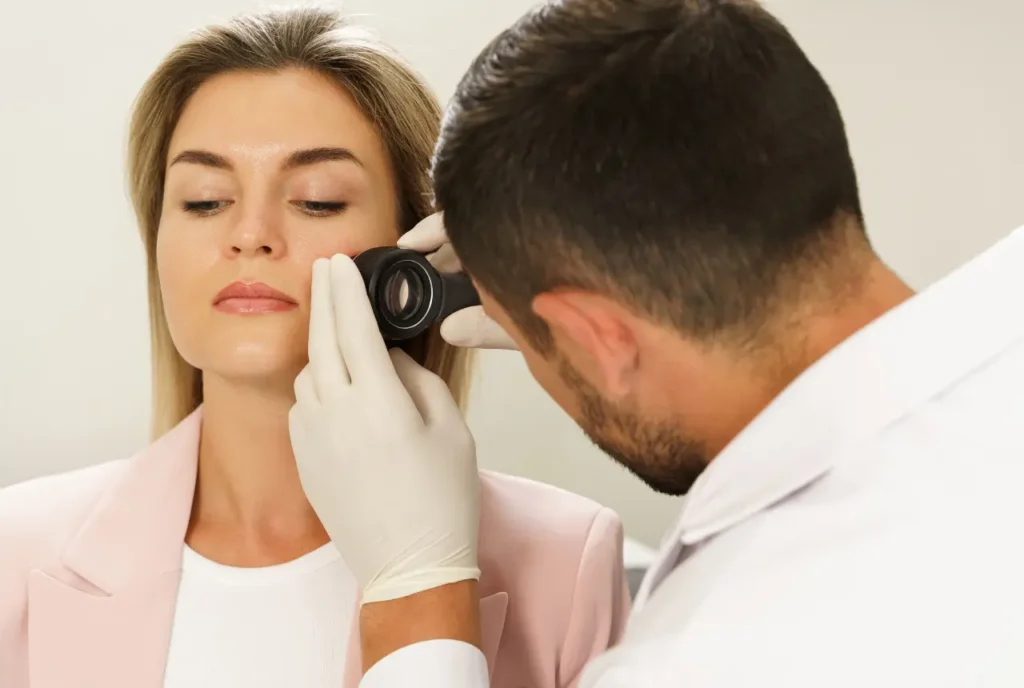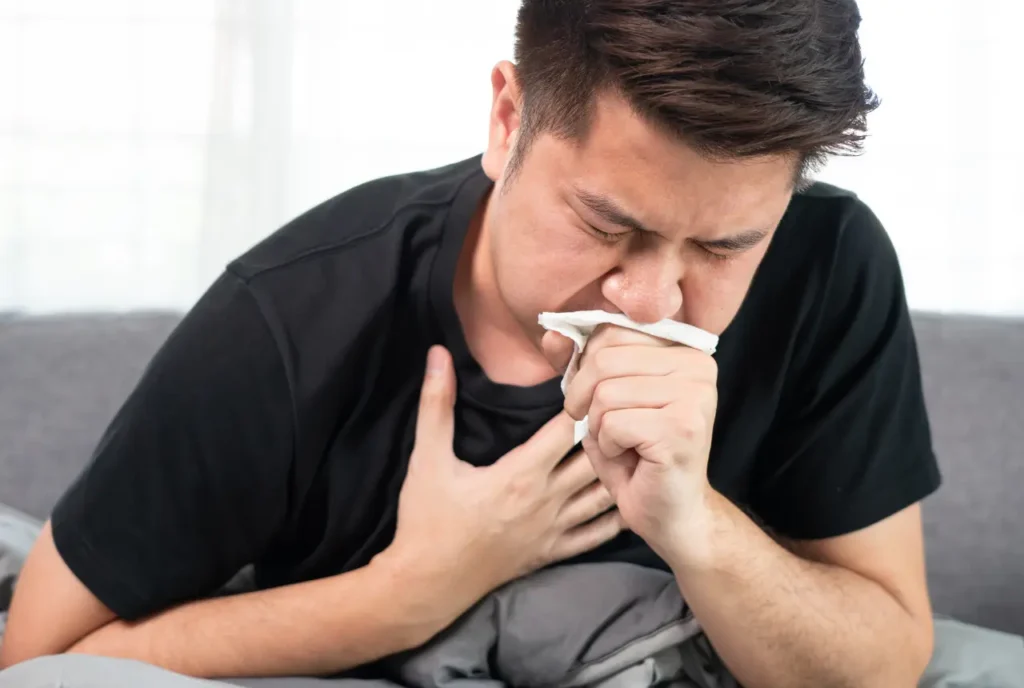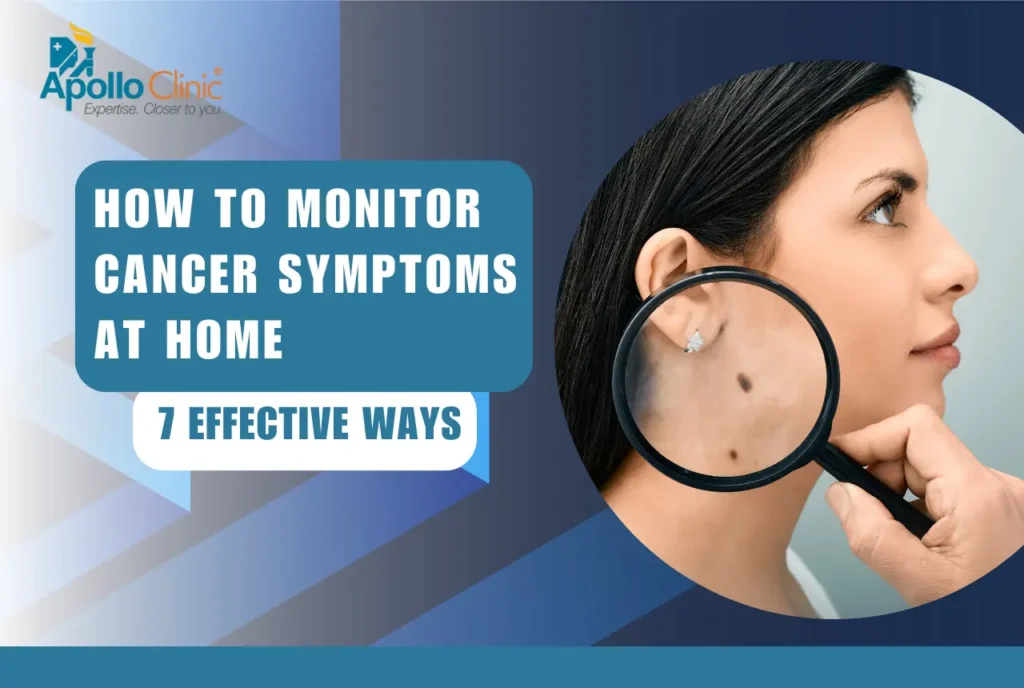7 Effective Ways How to Monitor Cancer Symptoms at Home
Cancer is a complex group of diseases characterized by abnormal cell growth that has the potential to spread throughout the body. Early detection is critical for successful treatment, and being aware of your body’s baseline health can empower you to notice potential warning signs.
While home monitoring cannot replace professional medical advice or screenings, it can be a valuable tool for early detection.
However, it’s important to remember that the absence of symptoms doesn’t guarantee good health, and regular check-ups with your doctor are essential. Read all the way to know how to monitor cancer symptoms at home.
How to Monitor Cancer Symptoms at Home: Start With These 7 Ways
1. Pay Attention to Changes in Your Body

The first step in monitoring for cancer symptoms is knowing your own body. This means being familiar with your moles, freckles, and any other unusual markings.
It also involves paying attention to your energy levels, digestion, weight, and overall well-being. While some changes in your body may not be cause for alarm (e.g., fatigue due to a busy schedule), persistent or unexplained changes are worth mentioning to your doctor.
Remember, a healthy lifestyle that includes a balanced diet, regular exercise, and adequate sleep can contribute to overall well-being and potentially reduce the risk of certain cancers.
2. Conduct Regular Skin Checks

Early cancer detection at home, particularly melanoma, is crucial for successful treatment. Performing regular skin self-exams at home allows you to monitor for any new or changing moles.
The ABCDE method can be a helpful tool for mole checks:
- Asymmetry: One half of the mole doesn’t match the other.
- Border: The edges of the mole are irregular or blurred.
- Color: The mole has multiple colors, or its color has changed.
- Diameter: The mole is larger than 6 millimeters (about the size of a pencil eraser).
- Evolving: The mole is changing in size, shape, or color.
If you notice any suspicious moles or changes in your skin, schedule an appointment with a dermatologist for further evaluation.
3. Be Mindful of Lumps or Bumps:
It’s important to be aware of any lumps or bumps that appear anywhere on your body, especially in areas like the breasts, lymph nodes, and testicles.
While some lumps may be benign (non-cancerous) cysts or fatty tumors, it’s crucial to get them checked by a doctor, especially if they persist or grow in size. Early detection of cancerous lumps significantly improves the chances of successful treatment.
4. Monitor Changes in Your Body Functions

Changes in your body’s normal functions can sometimes indicate underlying health issues. Pay attention to your bowel habits, bladder function, unexplained weight loss or gain, and persistent fatigue.
While these symptoms can have various explanations (e.g., constipation due to dietary changes), unexplained or persistent changes warrant a visit to your doctor.
Early detection of certain cancers, particularly those affecting the digestive system, can significantly improve treatment outcomes.
5. Be Aware of Unusual Bleeding or Discharge
Unusual bleeding or discharge from any bodily orifice, such as the breasts, rectum, or vagina, should be brought to your doctor’s attention.
While some explanations for bleeding may be benign (e.g., changes in menstrual cycle, hemorrhoids), persistent or unexplained bleeding could be a sign of an underlying condition. Early detection and diagnosis are crucial for effective treatment.
6. Track Persistent Cough or Hoarseness

A persistent cough, a new cough that doesn’t improve, or changes in your voice (hoarseness) can be cause for concern. Although these symptoms are often caused by common respiratory infections, they could also be signs of lung cancer.
If your cough persists for more than 3 weeks, or if you experience blood in your phlegm, consult your doctor to rule out any serious health problems.
7. Monitor for Difficulty Swallowing
Difficulty swallowing (dysphagia) can be caused by various factors, including acid reflux or enlarged tonsils. However, persistent or worsening swallowing problems can also be a symptom of some cancers, particularly those affecting the esophagus or throat.
If you experience difficulty swallowing, discuss it with your doctor to determine the underlying cause and receive appropriate treatment.
When to See a Doctor for Cancer Symptoms

Don’t wait for symptoms to become severe before seeking medical attention. Early detection is crucial for successful cancer treatment. Schedule a doctor’s appointment if you experience any of the following:
- Persistent or unexplained symptoms, such as those mentioned above.
- Any new lumps or bumps that appear anywhere on your body.
- Unusual bleeding or discharge from any bodily orifice.
- Any unexplained weight loss or gain.
Remember, regular cancer screenings recommended by your doctor are vital for early detection, even if you’re not experiencing any symptoms.
Limitations of Home Monitoring for Cancer
While home monitoring can be a valuable tool for early detection, it’s important to acknowledge its limitations. Here’s why it shouldn’t be a substitute for professional medical advice or cancer screenings:
- Limited Scope: Self-exams have limitations. You can’t easily examine internal organs like the pancreas, ovaries, or lungs. These areas require specialized equipment and expertise for proper evaluation.
- Accuracy: Distinguishing between cancerous and non-cancerous lumps or changes can be challenging for a layperson. A doctor’s experience and diagnostic tools can provide a more accurate assessment.
- Psychological Impact: Constant self-monitoring can lead to anxiety, especially if you discover a suspicious finding. Consulting a doctor can provide reassurance or a clear path forward.
Reliable Sources for Cancer Information
Staying informed about cancer is crucial. Here are some reputable sources for evidence-based cancer information:
- National Cancer Institute (NCI): https://www.cancer.gov/
- American Cancer Society (ACS): https://www.cancer.org/
- Centers for Disease Control and Prevention (CDC): https://www.cdc.gov/cancer/index.html
Remember, with the vast amount of health information available online, it’s crucial to fact-check and rely on credible sources.
Conclusion
Being proactive about your health and monitoring potential cancer symptoms at home can be empowering. However, early detection relies heavily on professional medical advice and regular screenings.
With these above-mentioned ways on how to monitor cancer symptoms at home, you can be sure of your health.
Don’t hesitate to schedule a doctor’s appointment if you notice any concerning changes or persistent symptoms.
Early detection is key to successful treatment, and a healthcare professional can guide you through the necessary steps for optimal well-being.


